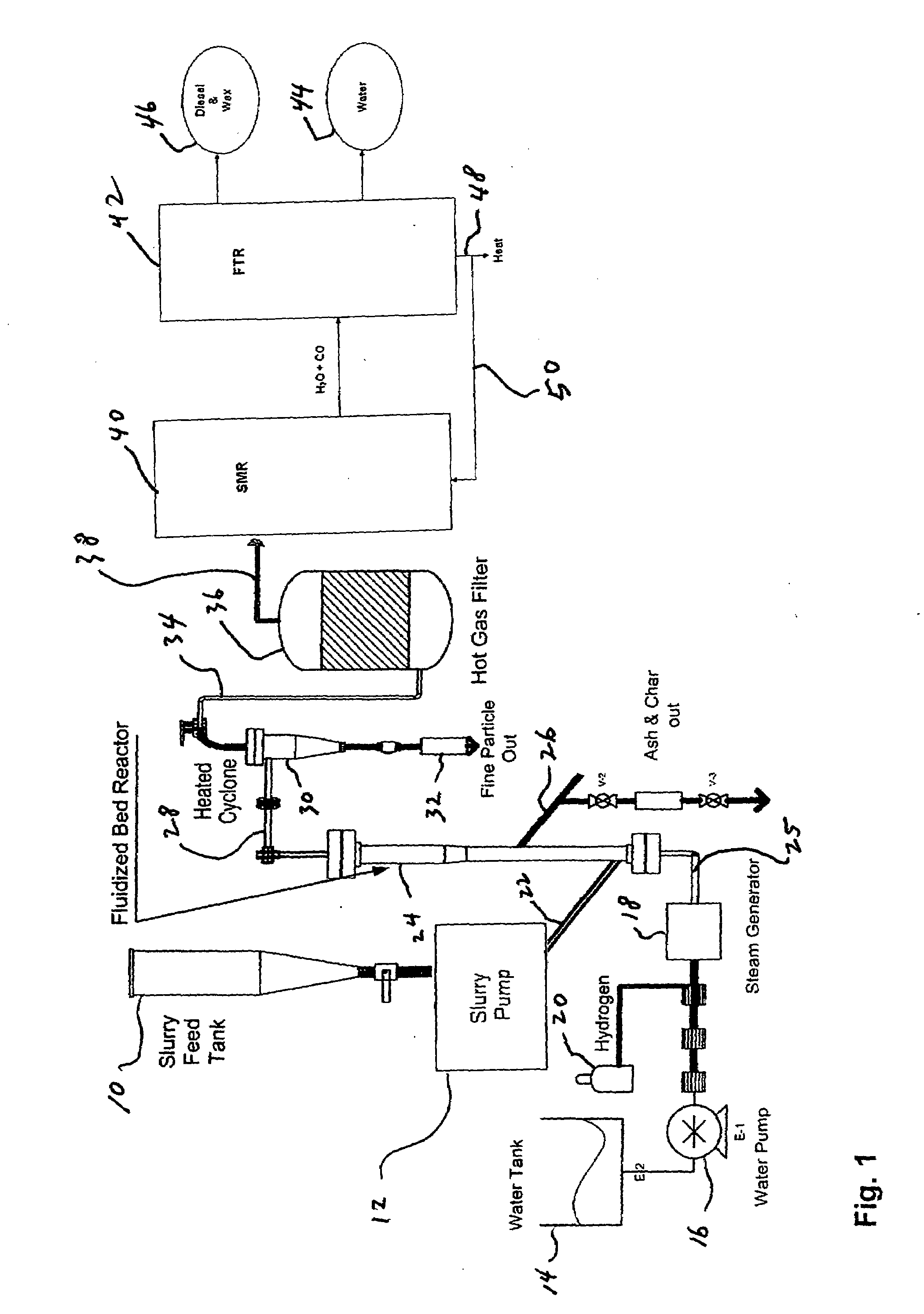Operation of a steam hydro-gasifier in a fluidized bed reactor
a technology of fluidized bed reactor and hydro-gasifier, which is applied in the direction of combustible gas chemical modification, combustible gas purification/modification, combustible gas production, etc., can solve the problems of reducing the catalyst efficiency, serious environmental pollution, and dependence on petroleum, so as to promote heat and mass transfer, improve the effect of efficiency and economic benefits
- Summary
- Abstract
- Description
- Claims
- Application Information
AI Technical Summary
Benefits of technology
Problems solved by technology
Method used
Image
Examples
Embodiment Construction
[0020]Referring to FIG. 1, Apparatus is shown for a process for converting carbonaceous material such as municipal waste, biomass, wood, coal, or a natural or synthetic polymer to a methane and carbon monoxide rich gas. The carbonaceous material in the form of a slurry is loaded into a slurry feed tank 10 and gravity fed to a slurry pump 12. In this embodiment, water from a water tank 14 is fed by a water pump 16 to a steam generator 18. Simultaneously, hydrogen is fed to the steam generator 18, which can be from a tank 20 of hydrogen, from an internal source such as the output from a downstream steam methane reformer (as will be described below), or from both. The output of the slurry pump 12 is fed through line 22 to the bottom of a fluidized bed reactor 24 while the output from the steam generator 18 is fed through line 25 to the fluidized bed reactor 24 at a point below the slurry of carbonaceous material.
[0021]In another embodiment, the hydrogen is fed directly to the fluidized...
PUM
| Property | Measurement | Unit |
|---|---|---|
| Temperature | aaaaa | aaaaa |
| Temperature | aaaaa | aaaaa |
| Pressure | aaaaa | aaaaa |
Abstract
Description
Claims
Application Information
 Login to View More
Login to View More - R&D
- Intellectual Property
- Life Sciences
- Materials
- Tech Scout
- Unparalleled Data Quality
- Higher Quality Content
- 60% Fewer Hallucinations
Browse by: Latest US Patents, China's latest patents, Technical Efficacy Thesaurus, Application Domain, Technology Topic, Popular Technical Reports.
© 2025 PatSnap. All rights reserved.Legal|Privacy policy|Modern Slavery Act Transparency Statement|Sitemap|About US| Contact US: help@patsnap.com

